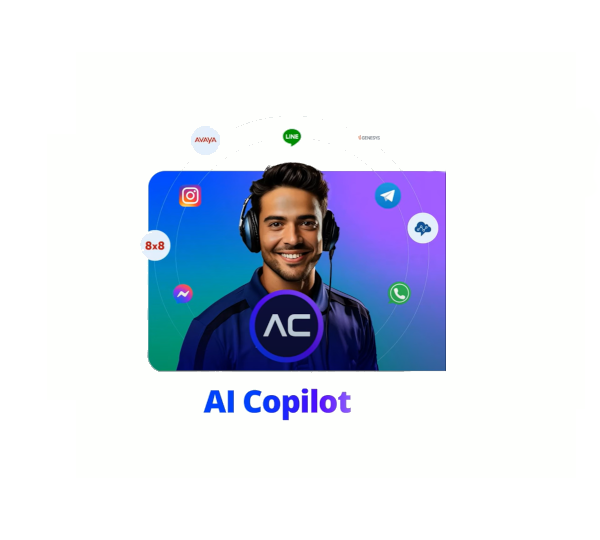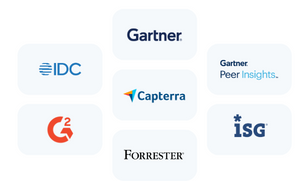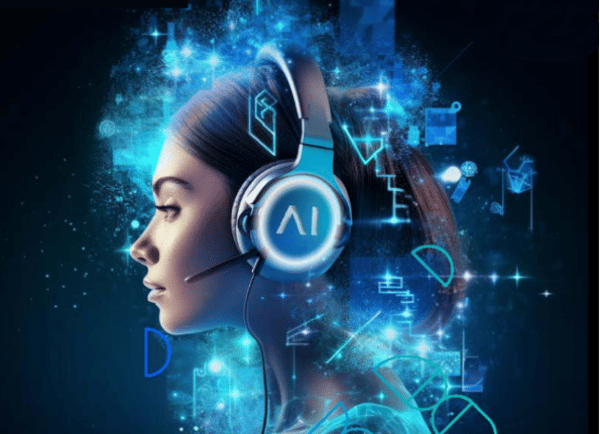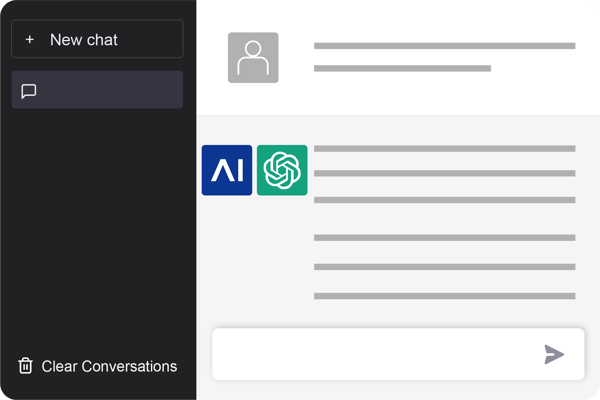We would need a crystal ball to have predicted the turmoil faced by contact center and CX leadership in the last few years. Without reviewing all that has affected business in recent times, it is true to say that we continue to deal with staff shortages and the demands of hybrid working. Today brings new challenges as we face economic uncertainty throughout the world. So, taking all of this into account, what does 2023 have in store for enterprise contact centers and Customer Experience? What challenges will we face and what can we expect from technological advances? Specifically, why is there a need to automate now more than ever? How will the customer journey evolve and what innovations can we expect in 2023?
As well as looking at these challenges, what role will virtual agents and bots play in helping to advance customer service and agent empowerment? Is this the year of Conversational AI? After all, it is Conversational AI that is predicted to continue to evolve the customer experience by enabling the automation of services, which in turn will enhance the customer experience and shoulder much of the mundane workload currently handled by contact center agents.
To begin with, let’s acknowledge that there’s a gap between what Conversational AI could do and what it currently offers your contact center. Automation should be more than just a solution to a problem. Ideally, your AI assistants, bots and other AI solutions should be as agile and invaluable as your tenured human workforce. This is the goal that we’re working towards at Cognigy, and we believe our Conversational AI platform is the right solution to provide this level of service.
This article will explain how we’re getting there, and what your business can look forward to from innovation and advances in Conversational AI in 2023.
Why Automation Now?
The notion of hybrid work, coupled with The Great Resignation and the quiet quitting phenomenon has widened the divide between employers and employees more than ever. A recent Flexjobs survey notes that 58% of respondents admit to suffering some form of burnout, with 17% admitting they’d quit their job outright without a work-from-home policy. With workers feeling less motivated to give their all to an employer, businesses are scrambling to keep and motivate agents in an effort to maintain an expected level of customer service.For many organizations, the answer to this challenge can be found in automation which takes care of repetitive tasks, ensures faster response times, and gives agents the time to tackle more complex issues for customers. Automation can also leverage deep integrations into existing infrastructure and backend systems to provide superior personalized and contextual experiences.
Customers are becoming less tolerant of sub-par service outcomes and want a satisfactory resolution to their inquiries now. Which means a potentially disenfranchised approach from the employees tasked with answering these questions couldn’t come at a worse time! Clearly the time to automate is now!
To recap, there are really four main drivers pushing the world towards increased automation and better self-service:
- CX expectations are elevated. Our collective patience levels are dwindling. We want answers now, and we use multiple channels to get what we need. The shortest path to a resolution is important, and this extends to customer service outcomes.
- Contact center labor is challenged in new ways. Agent churn and quiet quitting are fueling a decided lack of quality CX for many organizations. If contact centers aren’t offering significant income or training for their employees, they’re vulnerable to high turnover and poorer customer interactions.
- The relevant technology has matured. In the past, Conversational AI and service automation were pitched as magic black boxes that offered plug-and-play solutions to all of your contact center problems. Now with better speech technology and powerful low code extensible platforms comes more natural, personalized conversations. This evolved technology is delivering profound benefits in efficiency, higher job satisfaction scores and, of course, better CX.
- The technology is better for transactional interactions. Bots are better integrated with contact center infrastructure and backend systems and can now ‘act’ on behalf of the user instead of just dispatching calls or chats.
Beyond Knowledge Management to Agent Empowerment
By automating more of the mundane tasks an agent faces in their day-to-day workload, we now have a fighting chance to re-engage what statistics are calling a tired workforce. Live agents are free to pursue more engaging and complex customer service issues, which results in higher resolution scores and improved customer retention.Conversational AI is bridging the gap between employer and employee, while maintaining — and even exceeding — customer service expectations. Using natural language understanding and automation,
Conversational AI can actively help agents by listening to conversations in the background, analyzing and understanding them, and then offering proactive suggestions for agents such as documents, links to web resources and responses. When integrated into backend systems, agents can even directly carry out tasks from the chat, such as upgrading customer accounts. The latest advances in CAI mean that there are robust solutions for both voice and chat.
As a trend, this is all about empowering the agent with virtual assistants designed specifically to support them. So rather than an agent having to screen surf to find various information sources, the virtual assistant proactively retrieves and presents data the agent needs at the precise time it is needed to serve the customer. What’s more, with agent support bots (virtual assistants), human agents can fetch knowledge articles, carry out direct tasks in integrated backend systems or ask for help when working remotely.
The Evolution of the Customer Journey
In the good old days, your customer would call in over the phone and wait for a live agent to engage and try to solve the problem for them.Today your customers are interacting across a multitude of channels, with live agents often coming into the conversation well after an inquiry has been initiated. Whether it’s a self-service attempt or a Google search, your customer base is looking for answers faster than ever before. This trend will continue throughout 2023 with customers demanding access to services across a host of digital channels and with an expectation that their conversations can also continue across different channels.
The Cognigy AI platform uses bots that can make contextualized, personalized decisions based on free-form customer conversations. No longer is your audience forced to give one-word answers within guided and limited engagement structures. They simply choose a channel and enquire while the AI makes an educated decision on whether a bot or live agent is needed to successfully navigate and resolve the conversation.
Significantly, identification and verification protocols can now be handled completely automatically removing one of the most mundane tasks for agents while supplying faster answers to your customers.
What are the Next Conversational AI Innovations?
As with any emerging technology, the real fun lies in predicting where the future breakthroughs will be and examining how they might impact ROI and customer satisfaction outcomes. Here are some of the exciting potential use cases for conversational AI in the near-term:- Real-time engagement and translation: Large language models will allow Conversational AI to create answers and responses in real time, creating new and improved levels of engagement and agility.
- Proactive use cases: Automakers like Toyota are already using this technology to reach out to customers ahead of time for service bookings. By monitoring vehicle health remotely, Toyota can now proactively message customers of potential maintenance issues.
- AI assisted dream team: Combining robot process automation (RPA) with Conversational AI can offer unparalleled agent assistance. Using AI for document processing, for example, can enhance the agent handover experience. Imagine a customer taking a photo of a document, from which RPA automatically scans and translates relevant data directly to a form on an agent’s desktop. By eliminating manual input, resolution is achieved much faster, with all of the necessary information supplied in real time.
The Ethical Use of Data
Cognigy’s origins in a European country ensure compliance with all data usage and storage regulations, which ensures users benefit from a platform that adheres to the strictest regulatory oversight.
Our Conversational AI platform has mechanisms to control the storage and use of customer data at all levels of the platform architecture including database and UI. The ability to customize control provides a unique automation solution without compromising your customers’ information integrity.
Build Your Bridge
As the divide between employer and employee grows, automation can supply a much-needed bridge for your business.
When you’re ready, why not start with our free trial and establish a team to produce a lighthouse use case that can illuminate the efficiencies conversational automation can offer? Start with a small task, measure the results and harness the power of conversational automation to provide better customer service … and re-engage your workforce along the way.
Want to see what the experts are predicting for CX in 2023? Check out our on-demand MasterClass with contact center industry analyst and expert, Sheila McGeeSmith, Cognigy's Head of Product Marketing & Technology Evangelist, Sebastian Glock and Cognigy's SVP of Business Development & Strategy Hardy Myers, as they discuss emerging trends, new innovations and challenges that will be faced by enterprise contact centers in 2023.

.png?width=60&height=60&name=AI%20Copilot%20logo%20(mega%20menu).png)




.png?width=600&height=600&name=Knowledge%20AI%20Feature%20image%20(2).png)










.png?width=2000&height=2000&name=News%20images%20(2).png)



